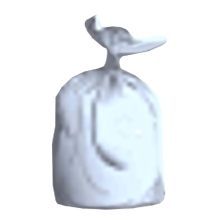Monday 17 October 2022
Islanders are being encouraged to look out for signs of the sweet chestnut blight plant disease that was confirmed in Guernsey earlier this year, in the hope of controlling, or eradicating, its spread.
Sweet chestnut blight is a serious fungal plant disease of sweet chestnut. It had been considered absent from Guernsey, but this has recently changed with an infection having been confirmed on a sweet chestnut tree in St Sampsons.
With no obvious source for the infection, it is considered likely that this disease will be present elsewhere in Guernsey and gardeners and landowners are being asked to check their sweet chestnut trees and report any symptoms.
Sweet chestnut blight is widespread in mainland Europe, and it has been found in parts of southern UK where attempts at eradication are ongoing.
The disease enters through wounds or splits in the bark. Typical symptoms include the cracking of bark and the presence of sunken cankers (areas where the underlying vascular tissue has died) on the trunks of trees. The disease may spread rapidly beneath the bark, resulting in wilting and the browning of leaves above. After moist weather, small orange fungal growths can be seen erupting through the bark.
If you think you have found an infected tree, please send a photo of the symptoms together with a site location to the Plant Health Inspector at agriculture@gov.gg or leave a message on 01481 221161.
Nigel Clark, Plant Health Inspector - Agriculture, Countryside and Land Management Services, said:
"Sweet chestnut is not a widely grown tree in Guernsey, but it is an important part of our landscape. By identifying any other infected sites, we will have a clearer picture as to whether eradication is possible or what control measures can be taken."
Sweet chestnut blight poses no threat to people, pets or livestock and it does not affect horse chestnut, or "conker" trees which are unrelated to sweet chestnut.
More information on sweet chestnut blight can be found at the UK Forest Research website: Sweet chestnut blight (Cryphonectria parasitica) - Forest Research
A detailed identification guide can be found at the UK Observatree website: observatree.org.uk













